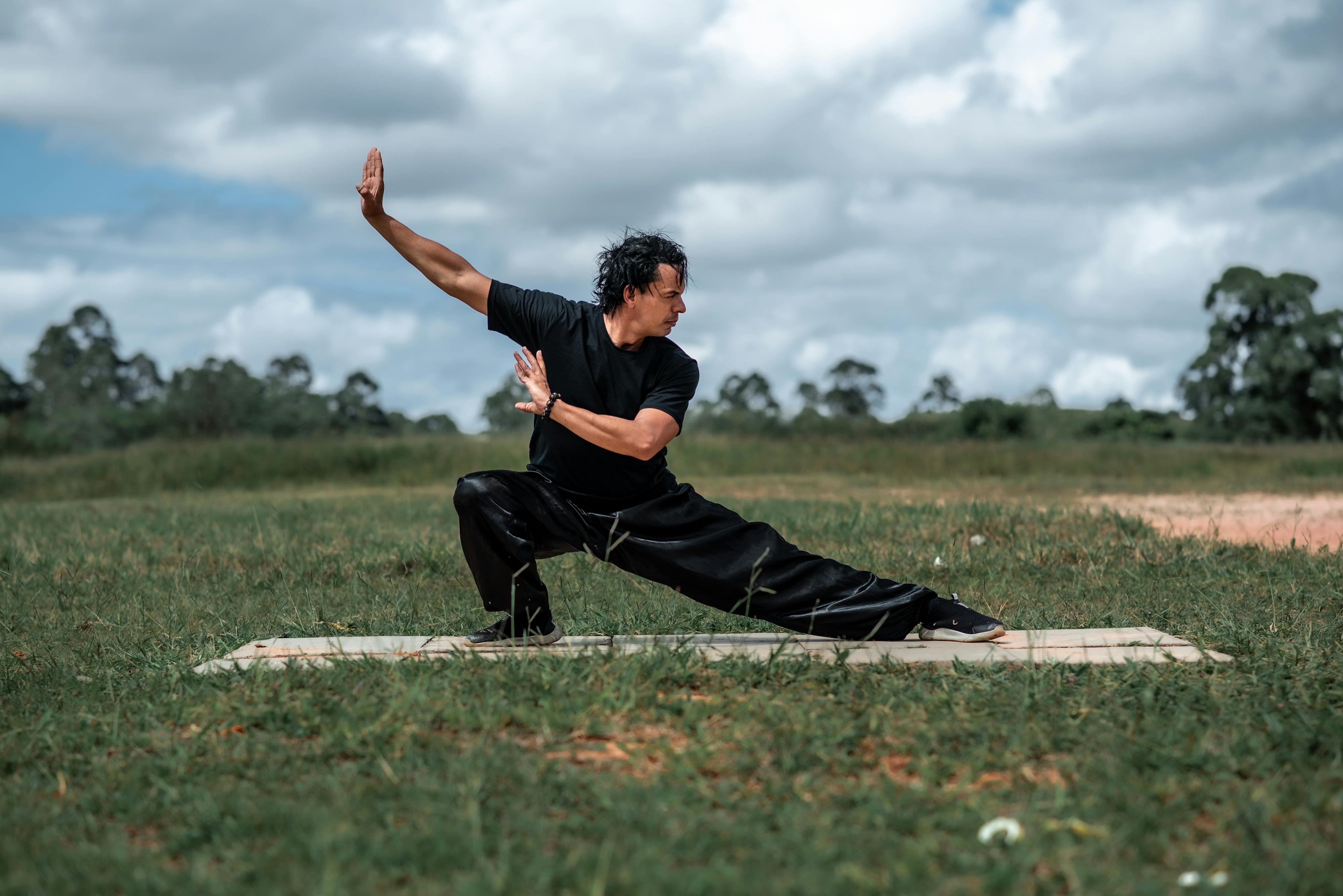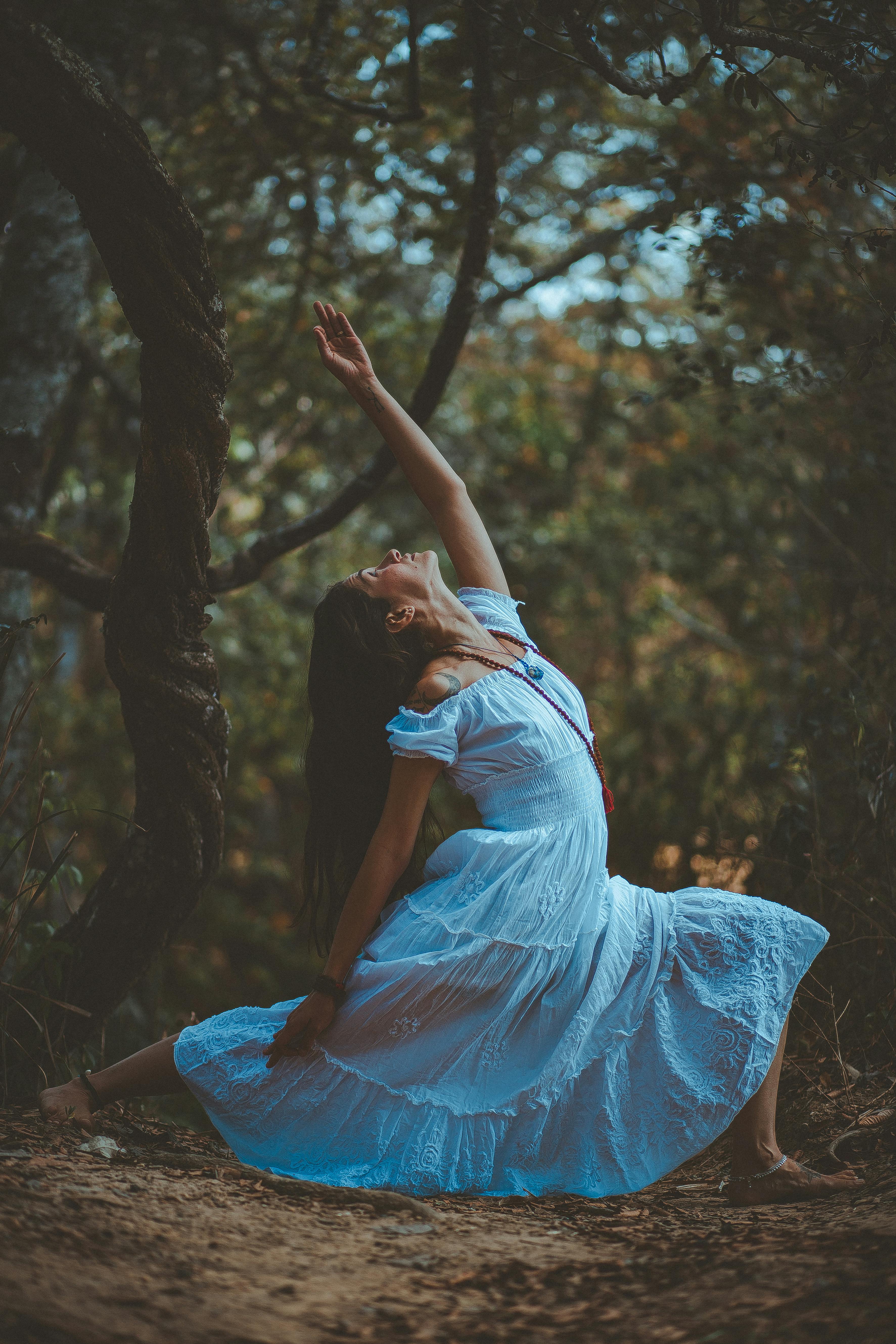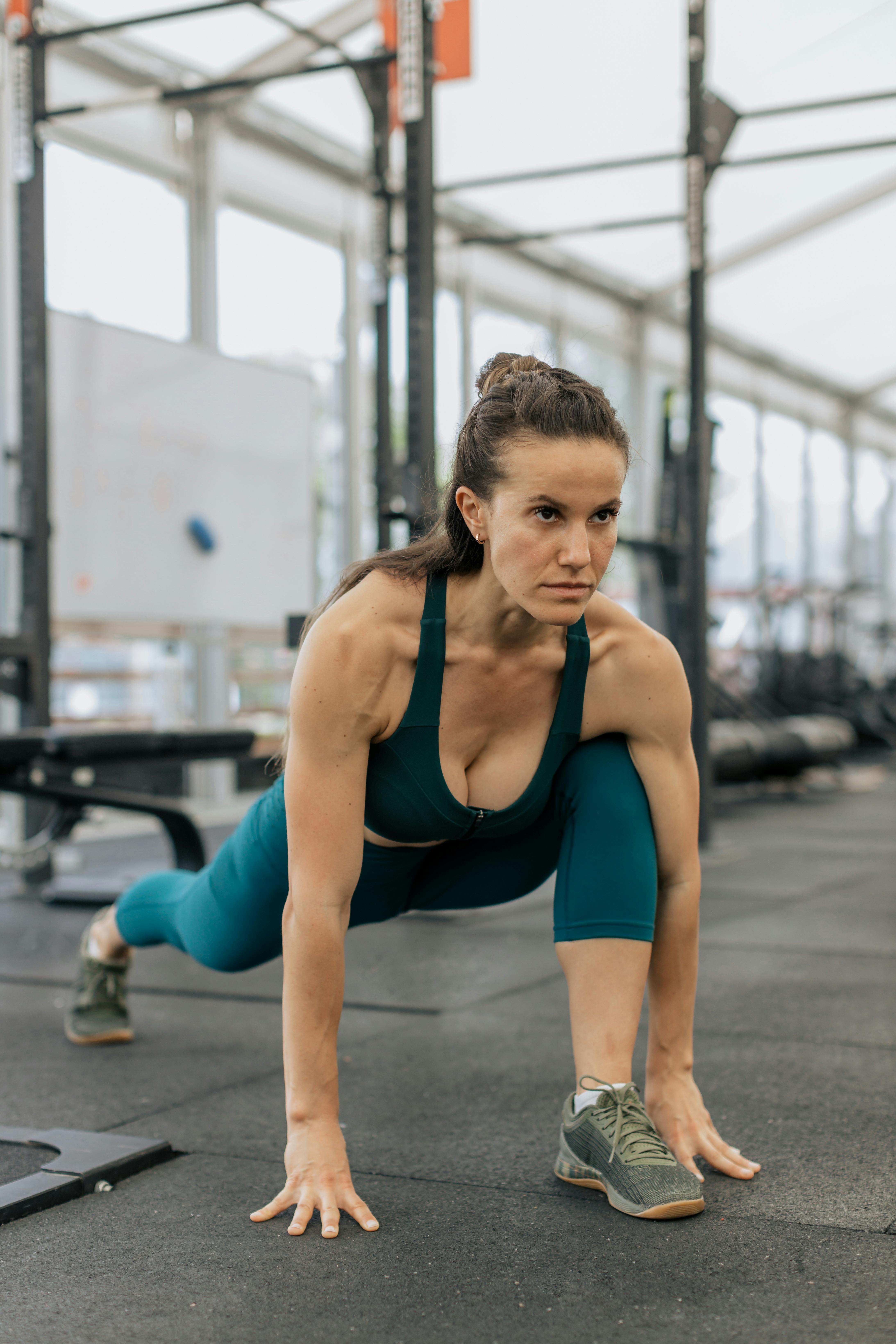Tai chi is that thing you’ve seen groups of seniors doing in the park aside from feeding birds. It looks like martial arts in slow motion.
Yoga is that thing where people in spandex stand on their heads.
Despite these two major stereotypes, tai chi and yoga actually have many similarities.
Today, I’ll cover the differences and similarities between tai chi and yoga in terms of:
- Goals
- History
- Practicality
- Accessibility
- Movement
- Breathing
Let’s go over the ins and outs of these two disciplines, so you can decide whether you want to pursue one or both!
Practice Goals
Tai chi is a form of qi gong, a practice deriving from ancient China that aims to cultivate and move energy around the body. Qi can be interpreted as “subtle breath” or “vital energy,” and gong can be translated as “skill cultivated through regular practice.”
The focus of tai chi is balance—within the body and mind, as well as with nature—and moving energy via continuous, dynamic movement.

Yoga is about unifying the body, mind, spirit, and nature. Generally speaking (as there are many yoga styles), it aims to do this through a combination of pranayama or breathing exercises, meditation, education and study, mudra (which are gestures that aim to intensify the flow of energy), and postures or asanas.
History of the Practice
Tai chi has its roots in ancient China, where it originated from the martial art qi gong. Thus, it goes back thousands of years. The first written reference to tai chi appeared in The Book of Changes more than 3000 years ago.
Yoga was born in ancient South Asia. The Hindu texts known as the Vedas, which were written around 5,000 years ago, contain the first documented use of the term yoga.
Practicality—Do I Need Special Equipment?
People often do tai chi outside. This is partly because you need room, and partly because it looks and feels great doing it in nature—with the wind, sun, and movement of clouds surrounding you. A natural environment is helpful if you want to feel and move your energy.
Apparently, it was said that you can do tai chi as long as you have the amount of space a cow can lie within.
Apart from a device that measures in lying-cow increments or an actual cow, you don’t need any special equipment to do tai chi. You would certainly benefit from wearing comfortable clothing, though.
You don’t need to wear special clothes to do yoga, either, but it is worth considering what to wear to yoga so that you’re comfortable while doing the various poses that come up in your class.
Unlike during tai chi, you might be spending some time upside down. So you may prefer clothes that don’t ride up on your body, reveal underwear, or fall and cover your face. Hence the modern tendency, but not obligation, toward form-fitting clothing.
A yoga mat is standard. It’s comfortable to step on, sit on, and lie on, and it keeps you from slipping during various poses.

You might want to use optional props, like yoga blocks (or something like a book) and a yoga strap (or a belt, scarf, or tie). A warm blanket may come in handy for a long savasana—the long, relaxing lie-down at the end of your session.
Cows are an unnecessary encumbrance during a yoga class. A goat or any other prop, however, could come in handy, depending on your yoga style.
Accessibility for Beginners or Those With Reduced Mobility
Tai Chi
Suitability for beginners: Tai chi can be rewarding, even though it’s difficult to learn all the movements. However, on a plus note for beginners, you don’t need any special preparation or training to start.
Appropriate for seniors: One of the reasons that tai chi is popular with seniors is because it’s low impact and improves balance. It’s not aerobic exercise like sprinting, but it is physical activity, which is a key component of a healthy lifestyle.
Good for those with reduced/low mobility: Tai chi can be practiced in a chair, so it’s good for people with mobility issues. Mountainside or rooftops are also optional.
Yoga
Suitable for beginners: There are many styles of yoga, many asanas, and lots of possibilities to modify those postures. This makes yoga very adaptable. Beginners needn’t fear not being able to do the poses or following the class to a T.
Beginner yoga classes will offer physical refinements and reminders about awareness, so you can gradually get more benefits from your yoga practice.
Good for seniors: Yoga is particularly well-suited to older people because of its adaptability. There is no single “senior-level” of fitness, mobility, or flexibility.
Low mobility options: Yoga for seniors offers variations, including chair yoga, which means anyone can do yoga that’s right for their individual goals and mobility level.
Movement
Very beautiful to watch, tai chi is a continual flow from beginning to end, which is designed to release and move energy around the body.
There are many styles of yoga, so you’ll find that the emphasis on movement varies. Some classes will have static poses.

Yin yoga is a contemplative practice with static poses that are held longer, as long as five minutes or more.
A class that focuses on pranayama (breathing exercises) might have you sitting or lying in one position for the entire time.
Others will include yoga flows from pose to pose. And those flows might be slow, as in hatha yoga, or fast, more akin to vinyasa or power yoga.
Power yoga is among the most dynamic forms of yoga. If you’re into the movement, you’ll find plenty here, including jumping if you want to take things up a notch. For this kind of yoga, it may be helpful to have a solid yoga practice behind you or at least some understanding of yoga and some physical tone and fitness.
The Importance of Breathing
The breath is the vehicle for energy in tai chi and integral to the practice.
Breathing is also a core component of yoga. Yogic breathwork, or pranayama, may be performed while seated or lying down, and it is also incorporated into yoga flows and asanas, too.
Suffice to say—breathing is a constitutive element of both tai chi and yoga.
Strength
People tend not to do tai chi to get ripped, but that doesn’t mean it doesn’t strengthen your body.
A bit.
Holding the natural weight of your arms and maintaining certain positions in which your legs, bending at the knees and moving, must consistently support your natural body weight may be enough to increase some muscle tone and build your strength to a degree.
Like tai chi, doing most types of yoga is not going to have you bench pressing your body weight if you can’t do that already. However, depending on the type of yoga you practice, it may help you become stronger.

Yoga could strengthen muscles by having you hold challenging poses for a long time. Or more rapid movements from pose to pose could help build muscle with regular practice.
Furthermore, regular participation in yoga classes designed for safe strength training, either with weights (intermediate to advanced level) or without weights, is a sure way to make you stronger.
So? Yoga vs. Tai Chi: Who Wins?
Oh, must we? Honestly?
Yoga and tai chi are often mentioned in the same breath because:
- They have similar benefits.
- Their roots go very deep.
- They are both accessible to beginners and popular with seniors.
- People like to do both outdoors.
- They can both work on your energy and the connection between your body and your mind.
They are different because:
- Yoga focuses more on the mind-body connection and unification with nature.
- You could say that yoga practitioners have more choice while practicing, because yoga is modifiable; you can take a pose further or make it more gentle, depending on how your body and mind are feeling that day.
- Yoga has the edge if your goal is to develop flexibility.
- Tai chi teaches you elements of a martial art.
- Tai chi focuses somewhat more on balance; unless you’re doing a yoga balance class.
- If you sped up tai chi, you could hurt someone. If you sped up yoga, the only thing you’d hit would be the dance floor, which makes yoga the safer of the two disciplines, right?
In the end, yoga and tai chi are complementary. It’s not unusual for yogis to combine both disciplines during a session!
If you’re still on the fence, try both.



Comments
Existing Comments